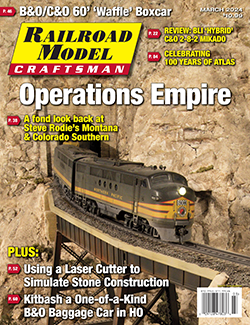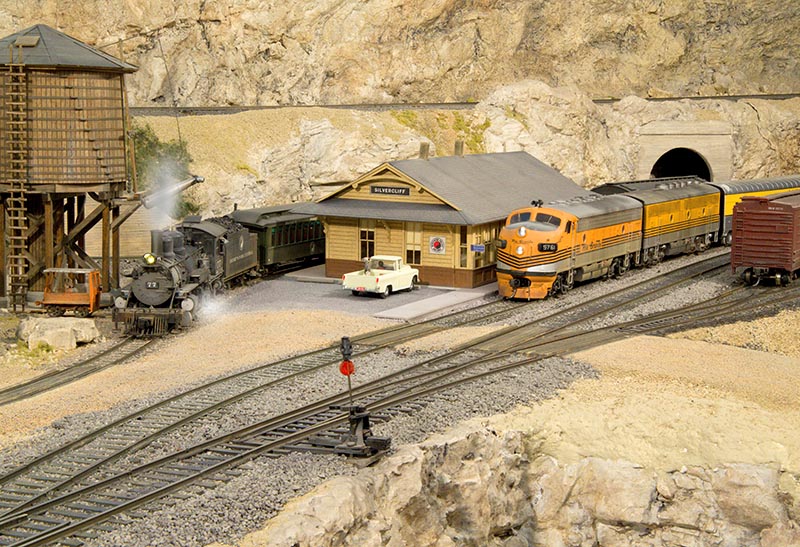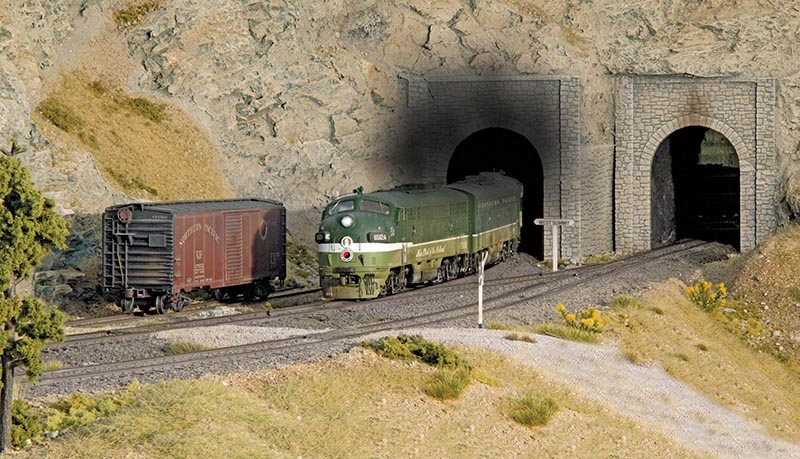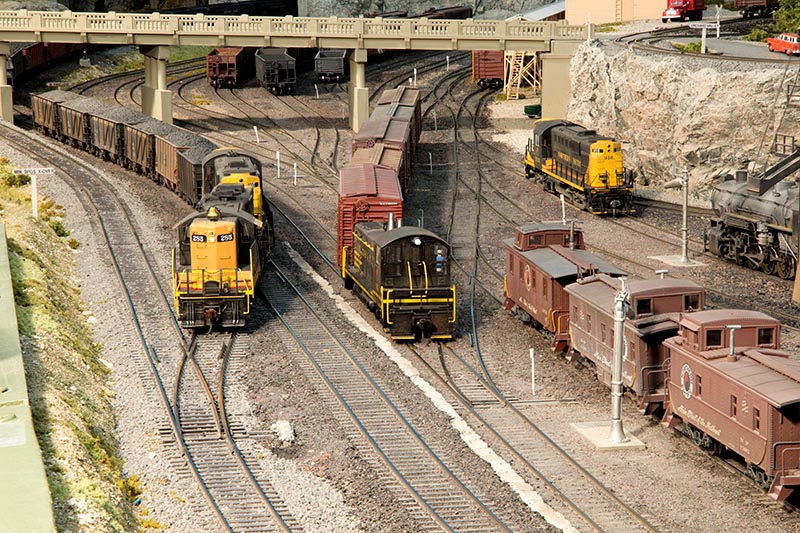 By Dan Munson/photos by the author
By Dan Munson/photos by the author
This is a good news/bad news, type of story. The bad news is that this 15-year-old model railroad, with sixty operating sessions completed, is now gone. The good news is there is a new version of this railroad already being constructed in a larger basement! The newly expanded version is building upon all of the lessons, challenges, and great friendships that made the first version possible — and it shows what can happen when a seasoned model railroader is introduced to the concept of operations. Welcome to a last look at Steve Rodie’s HO scale prototype freelanced Montana & Colorado Southern Railway!
The M&CS is based on a hypothetical Northern Pacific subsidiary extending the Alder Branch at Whitehall, Mont., south through southern Montana and eastern Idaho, ultimately connecting with the Denver & Rio Grande Western Railroad at Craig, Colo. The section that Steve modeled ran between Whitehall, Mont., and Blackfoot, Idaho, a fictitious town southeast of Idaho Falls.
To get a more complete story we have to go back a few years. Steve is a lifelong model railroader, starting with American Flyer S scale trains at age 3, moving to HO scale by age 11. To give you an idea of Steve’s level of dedication, a two-axle Tyco bobber caboose that he got new back in 1966 has been heavily rebuilt and continues to work on local freights as M&CS 1.

ABOVE: A westbound Rio Grande Director’s Special makes a station stop at Silvercliff while Henry’s Fork Central Train 13, a passenger local, backs into the station for a brief passenger and water stop before proceeding to Granite Creek.
Fast-forward to the early 2000s, and Steve starts work on this version of the M&CS, combining a challenging list of “must-haves” desired in one layout. He grew up with the D&RGW in Denver; he spent many summers fishing along the rivers that the NP, Milwaukee Road, and D&RGW narrow and standard gauge historically followed; and as a landscape architect, he wanted to extend his skills in scenery, backdrop painting, and equipment weathering. The freelanced M&CS brought together all of the pieces, and he designed it as a layout to be built and viewed — complete with staged trains that would appear, travel through mountain scenery, and disappear. The one thing the layout wasn’t designed for was operation.
Staging tracks and loops were located in a separate room, and trains would appear out of a tunnel on the lower level, traverse the entire railroad, including a 2.5 percent grade through tunnels and a snowshed, and return to staging through another tunnel on the upper level at Summit. Tortoise switch motors and five panels were used for remote control of all turnouts, including those in staging. Infrared detectors were used to facilitate keeping track of trains in hidden staging. A ten-track single-ended yard in Mineral Springs held 50-70 cars, but it was not designed for operations — there was no arrival/departure track, the caboose track was in an awkward location, helper engines used to switch the lead for servicing, and so on. There were some scattered generic industries — such as a grain elevator, coal dealer, and a freight house — but not enough spots to support true operation.

ABOVE: Train 36, the Intermountain Limited, emerges from the long tunnel at Summit after cresting the eastbound grade from Whitehall. The train connected earlier in the day with Northern Pacific’s Mainstreeter at Garrison, Mont., and provides passenger and express service to towns along the M&CS.
The mountain scenery was constructed of cardboard strip lattice with plaster gauze overlay, and incorporated a significant number of resin rock faces cast from Bragdon Enterprises molds seamed with Sculptamold and colored with acrylic washes and dry-brushing. Bridges were built from Micro-Engineering components, water was cast with Envirotex resin, and the backdrops were painted with acrylic paints onto vinyl bathtub surround. Landscape materials ran the gamut of typical textures including use of astilbe and goldenrod seed heads from his front yard landscape to develop conifer trees for hillside tree stands. It was Steve’s wife — who grew up in New Mexico — who asked where the narrow gauge trains were after much of the trackwork and scenery had been started! A small narrow gauge line serving a mine was added, but like most of the layout, it was more for show than operations…



